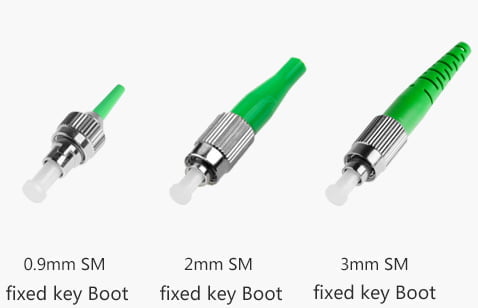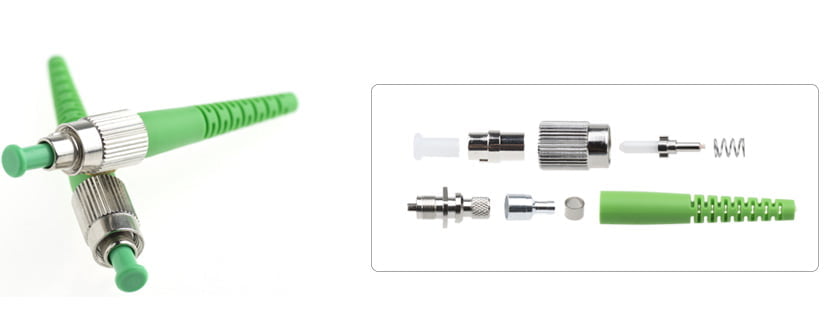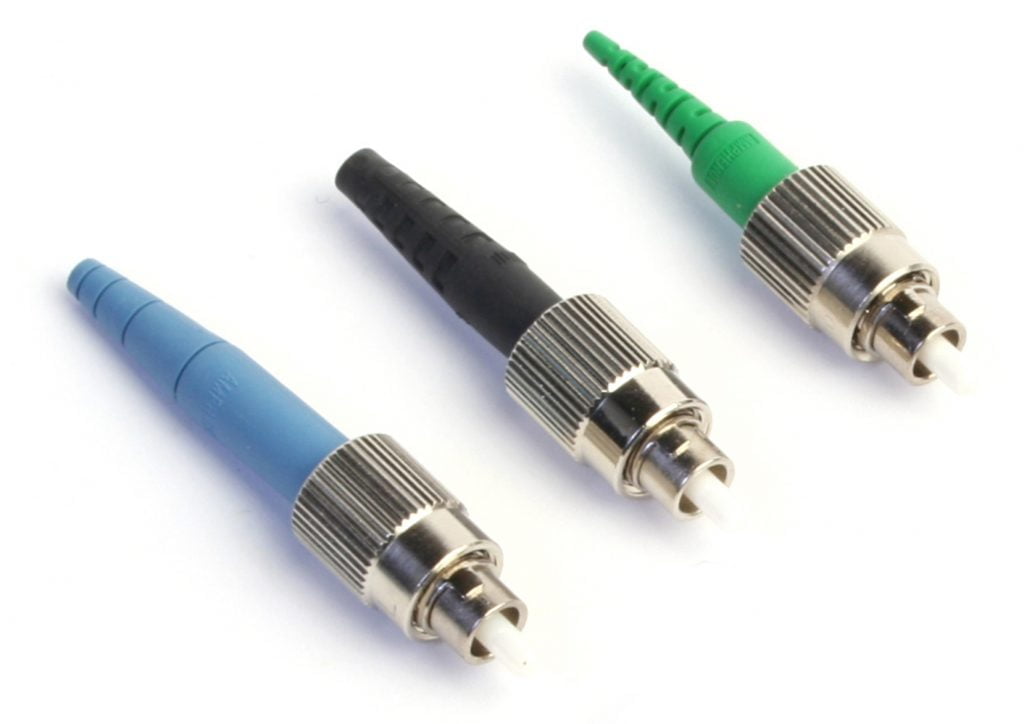The FC connector (Fiber Connector) is a type of fiber optic connector that is commonly used in high-speed networking and telecommunications applications. It was originally developed by NTT, the Japanese telecommunications company, in the late 1980s.
The FC connector consists of several parts, including a ferrule, a connector body, and a coupling nut. The ferrule is the part of the connector that holds the fiber optic cable in place, while the connector body and coupling nut provide the means for attaching the connector to other devices.
The FC connector is widely used in fiber optic networking applications because of its high performance and reliability. It is capable of operating at very high speeds and can support a wide range of wavelengths, making it suitable for use with a variety of different types of fiber optic cables.
The future of the FC connector is somewhat uncertain, as newer connector types such as the LC and SC connectors have become more popular in recent years. However, the FC connector is still widely used in many applications, particularly in industrial and military settings where its rugged design and high performance are valued.
The FC connector is used in a variety of applications, including telecommunications, data centers, and industrial networking. It is particularly well-suited for use in high-speed, high-bandwidth applications where reliability and performance are critical.
There are several different types of FC connector, including the FC/PC (physical contact), FC/UPC (ultra physical contact), and FC/APC (angled physical contact) connectors. The FC/PC connector is the most common type, while the FC/APC connector is often used in applications where high signal quality is required, such as in telecommunications and military applications.

The FC connector is a relatively early fiber optic connector, and it has been in use since the late 1980s. It is a threaded connector, which means that it uses a coupling nut to attach to other devices. This design provides a secure, stable connection that is less likely to become detached than other types of connectors.
The FC connector is available in several different types, including the FC/PC, FC/UPC, and FC/APC connectors. The FC/PC connector is the most common type, and it is suitable for most applications. However, the FC/UPC and FC/APC connectors are designed for specific applications where higher performance is required.
The FC/UPC connector is optimized for low insertion loss and back reflection, making it ideal for applications where high signal quality is required. The FC/APC connector is similar to the FC/UPC connector, but it includes an angled ferrule that reduces the amount of back reflection in the system. This makes it suitable for use in telecommunications and military applications where high signal quality and reliability are essential.
While the FC connector is still widely used in many applications, it has been largely supplanted by newer connector types such as the LC and SC connectors in recent years. These connectors are smaller and offer similar performance to the FC connector, but they are easier to use and take up less space in networking equipment.
Overall, the FC connector remains an important part of the fiber optic connector ecosystem, and it is still widely used in many applications where reliability and performance are critical.

The LC and SC connectors offer several advantages over the FC connector, including:
- Smaller size: The LC and SC connectors are much smaller than the FC connector, making them more suitable for high-density applications where space is at a premium. For example, data centers and telecommunications equipment often require a large number of connectors in a small space, and the smaller size of the LC and SC connectors makes them a better choice for these types of applications.
- Easier to connect: The LC and SC connectors are designed to be easier to connect and disconnect than the FC connector. They use a push-pull latching mechanism that makes them easier to insert and remove, and they do not require a coupling nut like the FC connector does.
- Lower insertion loss: The LC and SC connectors typically have lower insertion loss than the FC connector, which means that they can transmit signals over longer distances with less signal degradation.
- Higher reliability: The LC and SC connectors are generally considered to be more reliable than the FC connector, as they have fewer moving parts and are less prone to damage from handling or vibration.
- Higher performance: The LC and SC connectors are capable of supporting higher data rates than the FC connector, making them better suited for high-speed networking applications.
Overall, the LC and SC connectors offer several advantages over the FC connector, particularly in high-density applications where space is at a premium or high performance is required. However, the FC connector still has its place in many applications where its rugged design and high performance are valued.
While the LC and SC connectors have become more popular in recent years, there are still some applications where the FC connector is preferred over these newer connector types. Here are a few examples:
- Military applications: The FC connector is still widely used in military applications, as it is rugged and reliable, and can withstand harsh environmental conditions, such as extreme temperatures, shock, and vibration.
- Industrial applications: The FC connector is also commonly used in industrial applications, such as manufacturing and process control, where reliability and durability are critical. The threaded design of the FC connector provides a secure, stable connection that is less likely to become detached in these types of environments.
- High-power applications: The FC connector is capable of handling higher power levels than the LC and SC connectors, which makes it suitable for applications where high power levels are required, such as in some medical and scientific applications.
- Long-distance applications: The FC connector is capable of transmitting signals over longer distances than the LC and SC connectors, making it better suited for some long-haul telecommunications applications.
Overall, the FC connector remains an important part of the fiber optic connector ecosystem, and it is still widely used in many applications where reliability and performance are critical.

